SPECworkstation 3.0.2 Storage Benchmark
SPECworstation benchmark is an excellent benchmark to test systems using workstation type workloads. In this test, we only ran the Storage component, which is 15 separate tests.
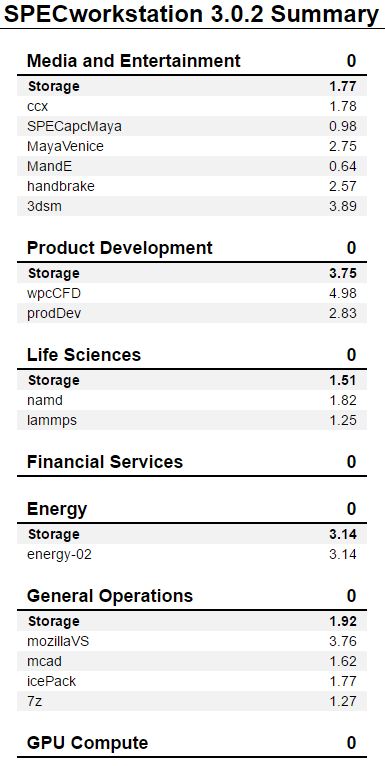
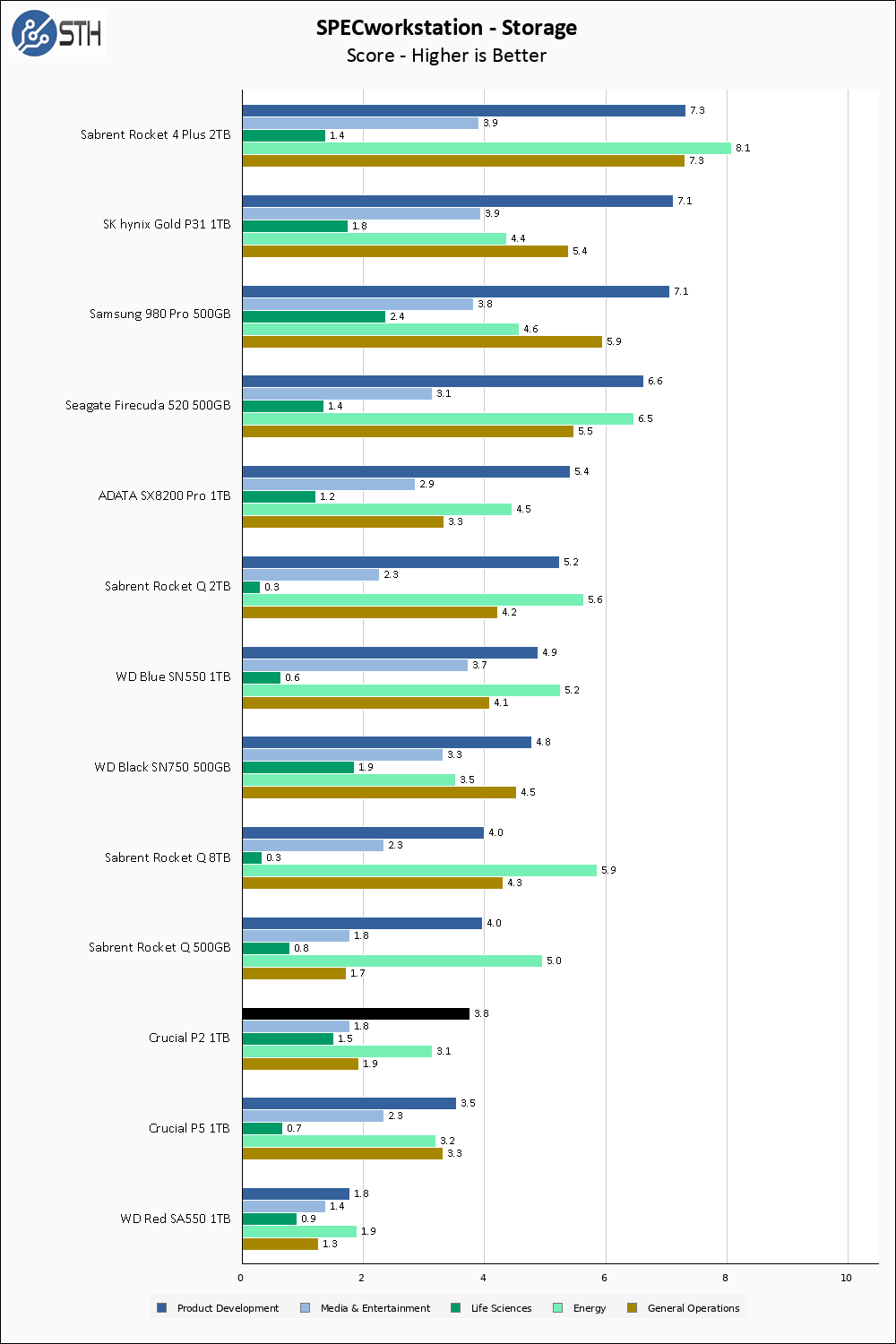
Much like the Crucial P5 before it, the P2 1TB does not do particularly well in SPECworkstation.
Crucial P2 vs Competing Drives
Since we have reviewed both the P5 and the P2 and they operate at different market positions, comparing the two seems like a useful exercise to see what the extra cost of the P5 gains you.
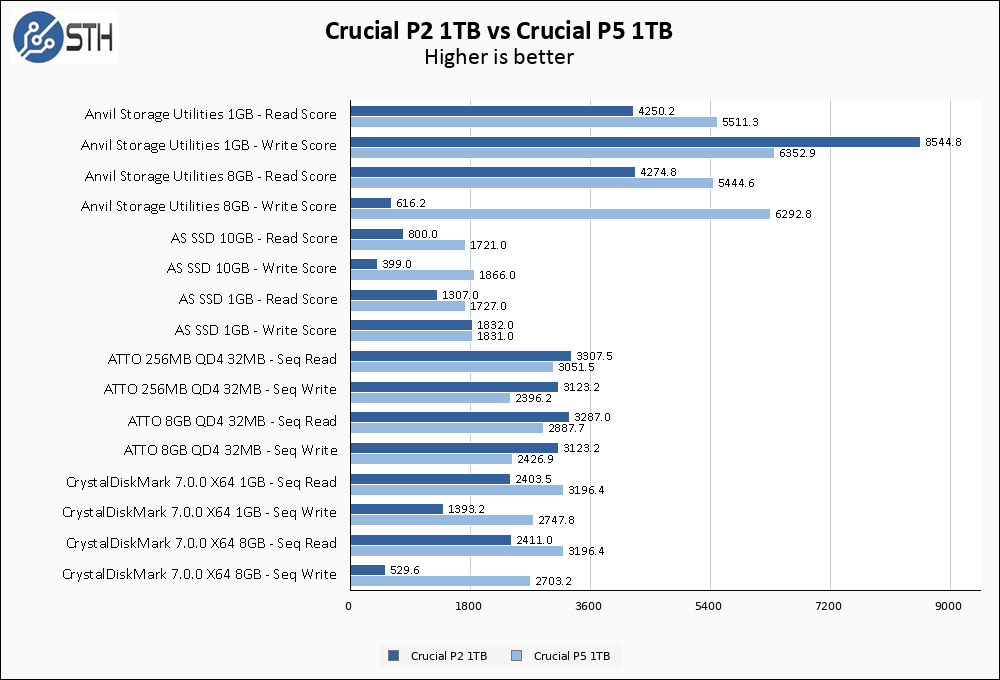
As you can see, the P2 and the P5 actually trade blows somewhat across our suite. However, the P2’s massive performance fall-off on the larger write tests cannot be ignored, and represent some comically large performance differences on the charts.
The natural competitor in our performance database to the Crucial P2 1TB would be the WD Blue SN550 1TB, so I will also compare those two drives.
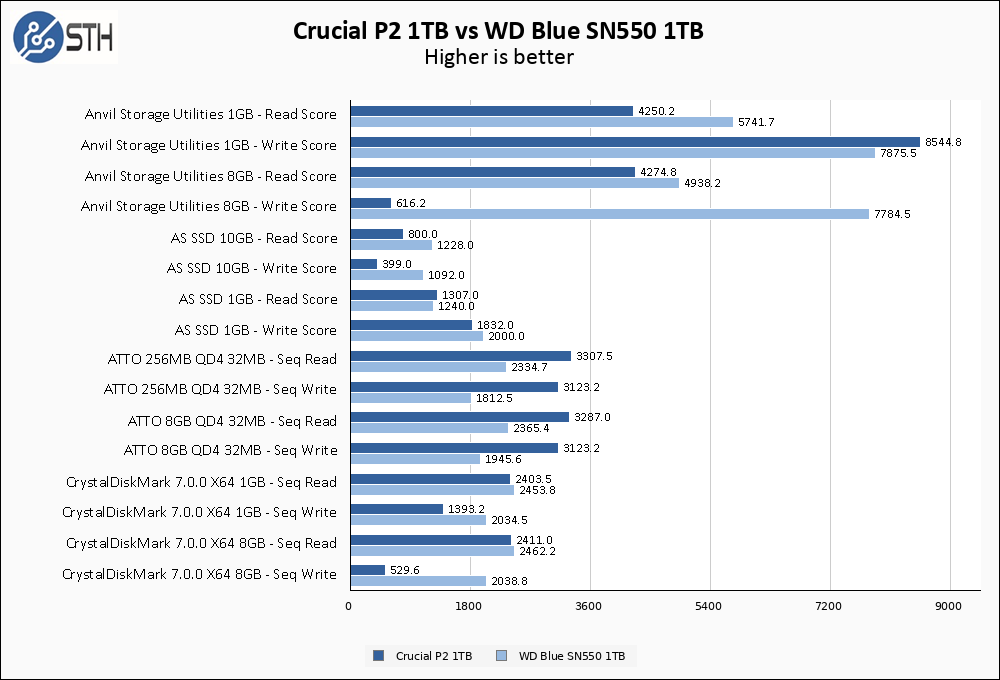
Compared to the WD Blue drive, the Crucial P2 notches 5 wins, 7 losses, and 4 ties across our benchmark suite. Unfortunately, thanks to the big performance fall-off on some of our tests, some of those losses are by huge margins, and none of the wins are nearly as dramatic.
Temperatures
We monitored the idle and maximum temperature during testing with HWMonitor to get some idea of the thermal performance and requirements of the drive. Please keep in mind that our test bench is an open frame chassis in a 22C room, and is thus not representative of a cramped low-airflow case.

The Crucial P2 does fine in terms of temperatures, peaking at 59C during our testing.
Final Words
The Crucial P2 1TB is priced as a mainstream PCIe 3.0 SSD at $105. Unfortunately, its biggest competitor on our performance charts is the WD Blue SN550 1TB, which is currently $95. When we reviewed the Crucial P5 1TB I considered it to be overpriced compared to some of the competition, and with the P2 $10 more expensive than the WD Blue SSD that trend seems like it is continuing.
The large write performance drops of the P2 under heavier loads is disconcerting, especially when the drive falls below SATA levels of performance. On the other hand, read speeds were largely consistent and acceptably middle-of-the-pack, which is expected given the rated performance levels. The Crucial P2 1TB never really manages to stand out in any particular good way though, whether through pricing or performance.
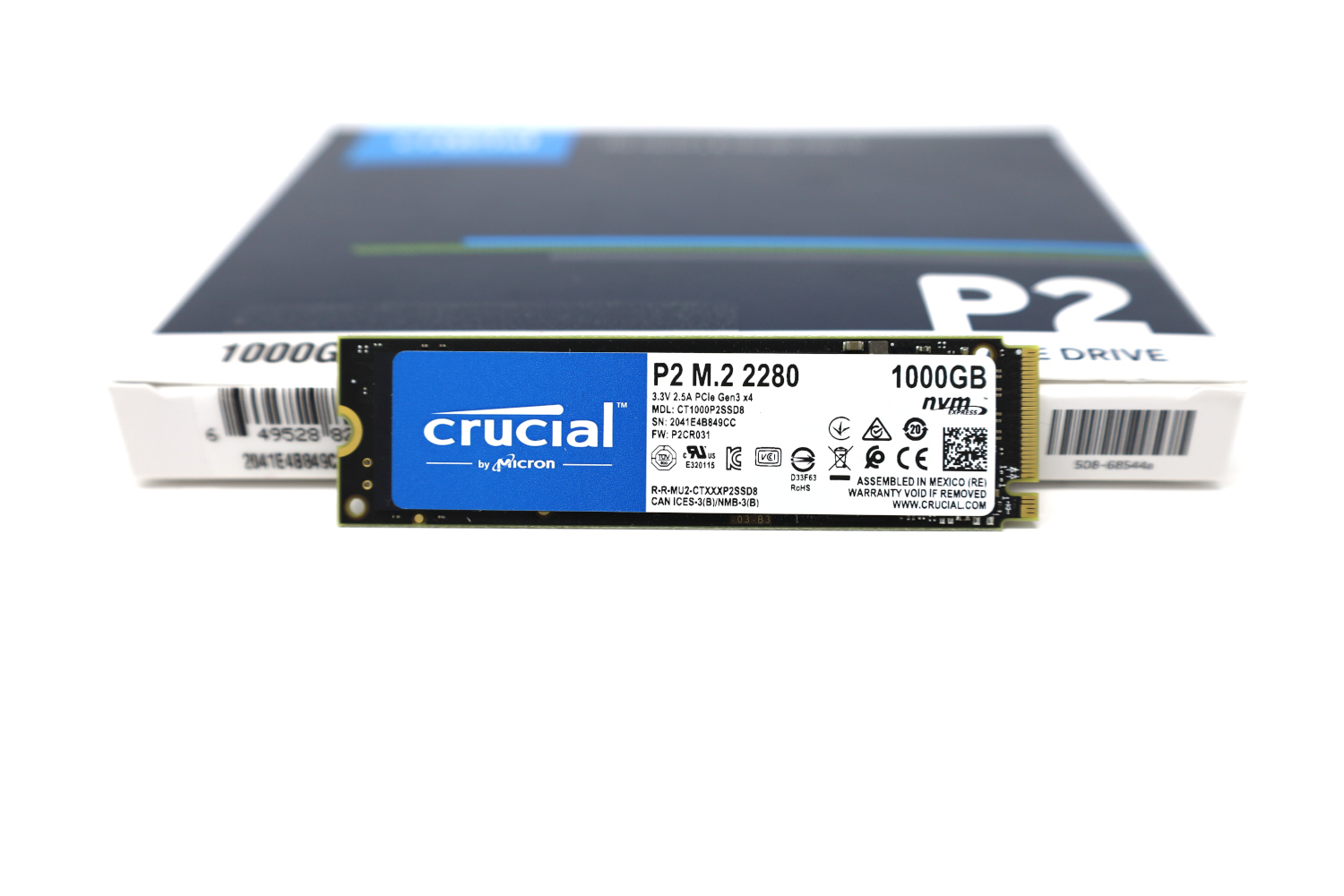
As long as the Crucial P2 1TB SSD remains priced higher than the WD Blue SN550 1TB, it is difficult to find a reason to prefer the Crucial drive. While the P2 and the Blue trade blows in performance occasionally, the extreme write speed fall-offs for the Crucial P2 are not a problem that the WD drive experiences, and as a result, the Blue is a much more consistent performer overall. Perhaps if the P2 goes on a significant discount below the SN550 in cost then it can be a good value option, but for now, I simply cannot recommend it.




i got an idea….why do we not make a chart of the temperatures of all drives like we do for performance testing ?
because in every nvme review we see only the temps of the tested drive, while for tested performance we see many other driver along side with tested drive….just put the temps of other drives with the tested drives…..
i think my point is clear enough what i mean
erik,
My logic is that temperatures aren’t a competition; drives operating at a lower temperature does not correlate to better performance. I don’t want to put multiple drives on a graph, and then say “lower is better” for temperatures, and have someone draw a conclusion that a drive that peaks at 60C is somehow ‘better’ than a drive that peaks at 62C.
The point of the temperature testing is to determine if the drive requires any additional cooling.
@Will.
i am not saying that the temps are effecting the performance. but it is easy to see the temps of different model at a glance as in the performance charts.
when i buy a nvme drive, the temp is important factor in my decision/choice.
“Lower is cooler”
How can it still score an 8 while not being recommended? 8/10 is very good!!
@J
the 7 is the true zero ;-)
DRAMLESS and/or QLC drives make no sense, they are not cheap enough to justify the big performance difference and diminished endurance.
For example, you can usually find the 860 EVO at the same price or even lower than the 860 QVO.
I love that the official spec page incorrectly states TBW as *Total* Bytes Written and rates the 2TB disk as 600 bytes. Total. Not terabytes, 600 total bytes. Guess P/E cycles on QLC is worse than I thought, hah.
@Greg
nice catch. This is so funny!
Why not to turn on QLC into SLC and make another set of test. Because that’s what you get, when installing drivers. Speed different is huge, when activated.
well i’m guessing its still alot faster then an old disc hard drive
what is the software that can tell me the temperature of my nvme ssd. i need one/
what is the software to check the temperature of nvme ssd.